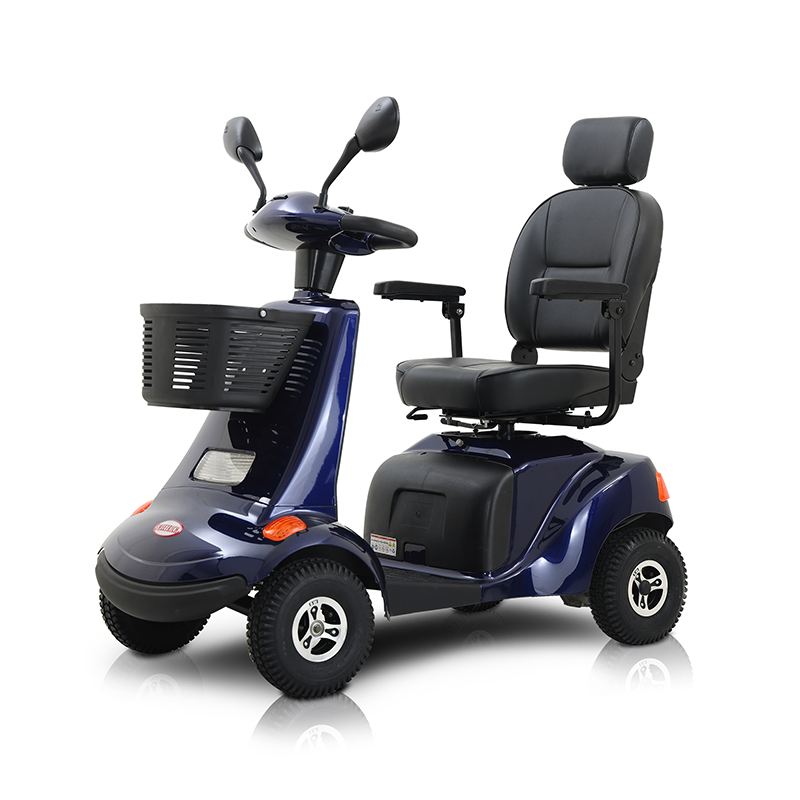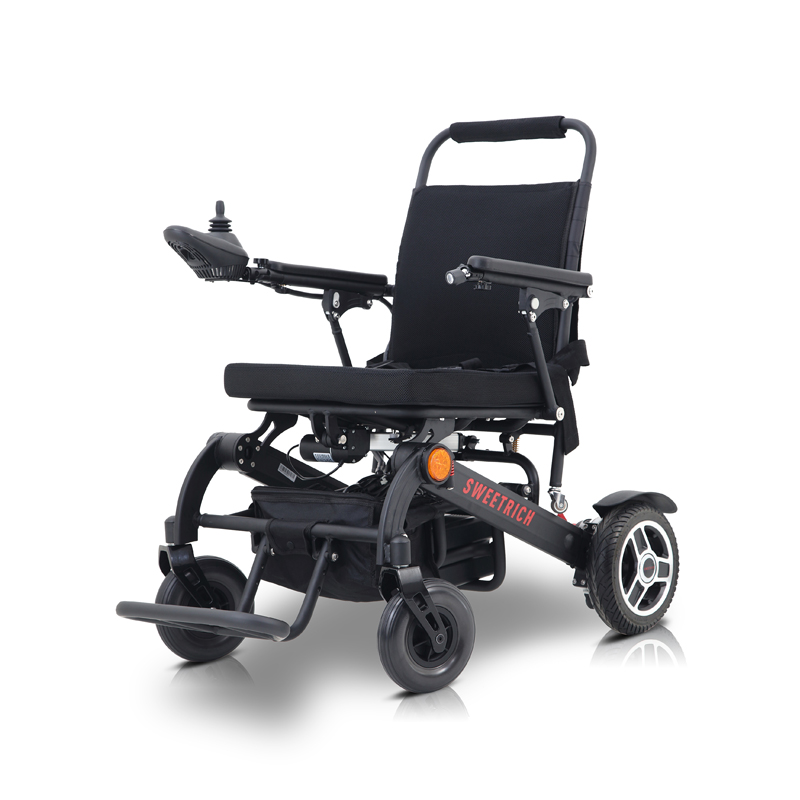In recent years, the idea of independent mobility has moved beyond traditional walkers and wheelchairs. As the global population ages, more seniors are seeking travel solutions that are both efficient and convenient. Among these innovations, lightweight electric mobility scooters have become a symbol of modern mobility—offering a balance of independence, portability, and performance. Compared with conventional scooters, these modern designs have achieved remarkable progress in convenience, design, and user-focused innovation, gaining popularity among older users who value comfort and autonomy. The growing demand for such products has also boosted interest in the Wholesale Lightweight Scooter market, as manufacturers seek to meet the evolving expectations of aging populations.
From Traditional Scooters to Lightweight Innovation
Traditional electric scooters were originally designed to provide stability, durability, and power for users with mobility limitations. While they accomplished this goal, they also presented several challenges—heavy frames, large batteries, and complex assembly. Many seniors found them difficult to lift, transport, or store, which limited their ability to travel independently or enjoy spontaneous outings.
Lightweight electric scooters changed this reality. Advances in materials science and battery technology have made it possible to create scooters that are strong yet easy to carry. Using aluminum alloy, carbon fiber components, and high-density polymers, engineers have designed models that can be lifted, folded, and transported without assistance. This innovation has opened up new possibilities for seniors—whether navigating city streets, using public transport, or traveling with family.
Designed for Portability and Convenience
One of the greatest advantages of lightweight scooters is their portability. Unlike traditional scooters, which often require ramps or carriers, lightweight models can be folded and stored in a car trunk or carried onto public transport. Some versions include one-touch folding systems or modular frames that disassemble into smaller, manageable parts.
For seniors living in cities or smaller homes, this foldable design minimizes space usage while allowing quick deployment when needed. Some models even use airline-approved lithium-ion batteries, ensuring safe transport during flights. This convenience makes daily use more practical and encourages independence. In a time when independence is closely linked to mental well-being, being able to leave home, visit friends, or explore neighborhoods without relying on others greatly enhances confidence and self-esteem. For many, owning a portable electric scooter is not only about mobility—it’s about maintaining dignity and control over daily life.
Comfort and User-Centered Design
Despite being smaller and lighter, modern lightweight scooters offer notable comfort improvements. Many models feature ergonomic padded seats, adjustable handlebars, suspension systems, and responsive controls for smoother rides. Manufacturers have also added intelligent braking systems and variable speed modes for better control and safety.
This shift highlights a change in design philosophy: modern scooters are made with the user in mind. Every handle, curve, and control is optimized for usability. While traditional scooters focused on structural strength, lightweight scooters are designed for flexibility and comfort. Reduced vibration and better suspension allow seniors to ride comfortably across different terrains—from indoor hallways to shopping centers and park paths. This adaptability encourages frequent use, promoting physical activity and social interaction.
Technological Advancements Supporting Independence
Technology plays an essential role in the evolution of lightweight scooters. Newer models use efficient lithium-ion batteries that extend travel range while reducing charging time. Brushless motors ensure quiet operation and smoother acceleration, improving the riding experience.
Many scooters now feature LED displays for speed and battery monitoring, built-in USB charging ports, and even smartphone connectivity for route tracking or diagnostics. Some models pair with mobile apps, allowing users or caregivers to check performance data or receive maintenance reminders remotely.
These smart features provide both convenience and peace of mind—enhancing independence while ensuring safety. Seniors can now enjoy functionalities once exclusive to electric vehicles, blending innovation with practicality.
Comparing Traditional and Lightweight Designs
When placed side by side, traditional and lightweight scooters clearly show how engineering and ergonomics have evolved. Conventional scooters are typically heavier, built for long-distance or outdoor use, and provide stability and power. However, their size and weight can make independent operation difficult for some seniors. They also occupy more space, making them less practical for tight indoor areas or travel.
Lightweight scooters, by contrast, prioritize versatility. They are easy to maneuver in confined spaces, can be folded quickly, and usually weigh under 30 kilograms. These traits make them ideal for seniors who value mobility and self-reliance. Although their top speed or range may be lower, their ease of use and portability compensate for these trade-offs.
This evolution reflects how technology supports inclusivity. The lighter, more accessible design allows seniors who might otherwise avoid mobility aids to embrace them confidently. These scooters are no longer viewed purely as medical devices—they are becoming lifestyle enablers: stylish, compact, and functional.
Benefits for Seniors: Empowerment Through Movement
The benefits of lightweight electric scooters for seniors go far beyond practicality. Independence is a crucial part of well-being, and the ability to move freely enhances confidence, reduces loneliness, and promotes a more active lifestyle. With these scooters, seniors can perform daily activities independently—shopping, visiting friends, or exploring the community—without the challenges that come with heavier equipment.
The psychological benefits are equally meaningful. Easy operation and portability eliminate frustration, while the modern, sleek design helps break stereotypes associated with mobility aids. Many seniors who use lightweight scooters report feeling more capable, engaged, and willing to socialize.
Increased activity also contributes to physical health. Lightweight scooters encourage users to go outdoors more frequently, improving circulation, mood, and overall vitality. Compared with traditional walking aids, they provide better stability and require less physical effort, allowing users to travel longer distances without fatigue.
Market Growth and Rising Popularity
The rising popularity of lightweight scooters reflects broader demographic and cultural trends. As populations age, the demand for mobility solutions continues to expand—but modern consumers seek more than functionality. They want products that combine performance with design, practicality with innovation.
Manufacturers have responded by offering a range of models tailored to different lifestyles and preferences. Some focus on travel portability, while others emphasize everyday comfort. This diversity ensures that seniors can choose a scooter that matches their personal needs without compromise.
Environmental awareness has also influenced buying decisions. Lightweight electric scooters are energy-efficient, require minimal maintenance, and align with sustainable living values. This eco-friendly aspect appeals to both seniors and younger family members who often assist in purchasing decisions.
A New Era of Freedom and Accessibility
The rise of lightweight electric scooters marks more than just a technical achievement—it reflects a shift in how society perceives aging and mobility. Today’s seniors are active, socially engaged, and tech-aware. They value products that empower rather than limit them, merging functionality, comfort, and dignity.
Compared with traditional scooters, lightweight models offer greater independence and adaptability. Their ergonomic design, portability, and smart systems make them an essential mobility solution for modern seniors—one that redefines what it means to move freely, confidently, and gracefully in everyday life.





















